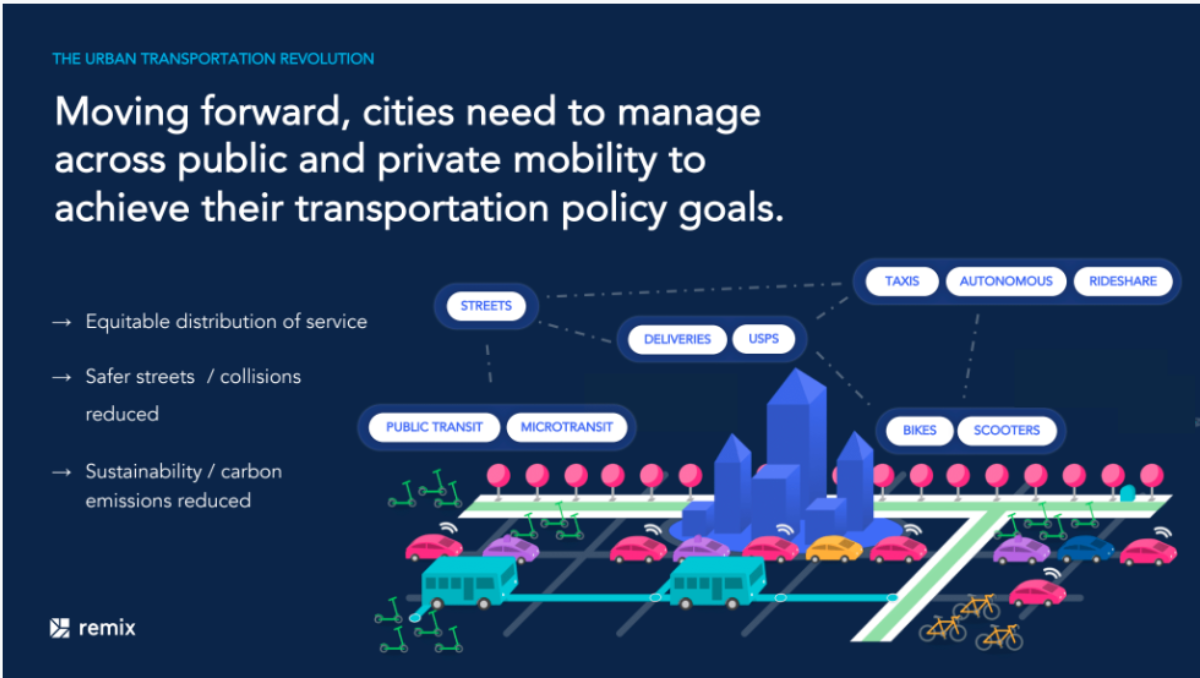- News and Stories
- Blog post
- Summit
When Code Enters the Physical World

Often when we think of code, we think of operations purely in the digital realm. This view is increasingly obsolete; some of the hottest companies in Silicon Valley are tackling how we move around in our day-to-day lives. In a much less showy way, government is doing the same. In the Using Data to Expand Access and Increase Safety in Mobility breakout session during the 2019 Code For America Summit, three experts—Rodrigo Davies from Strava, Tiffany Chu from Remix, and Danielle Dai from City of Oakland—met to discuss how cities can use data in the digital realm to improve transportation in the physical realm.
“If we can’t measure it, we can’t improve it.”
A theme in all three talks was the power of technical tools to measure, both in identifying targets for interventions and evaluating the impact of those interventions. For example, how do you determine which areas of a city are dangerous for cyclists? One easy method, and what has primarily been done in the past, is to measure formal accident reports. But this number is in fact useless without also knowing how many safe trips occurred in the same area. Enter Strava Metro, led by Rodrigo Davies. Strava produces an exercise app that collects data on the paths people follow while engaged in active transport like walking or biking. The Metro team turns this into aggregate data that can estimate the foot and bike traffic on a given street, giving municipalities an idea of the frequency of accidents instead of just the count. This lets cities identify the streets that are most dangerous to cyclists, and focus on improving them.

“Safety is an equity issue.”
Another example is Remix, founded by Tiffany Chu and three 2014 Code for America fellows, which provides a platform for cities to understand, design, and collaborate on transportation plans and data —such as transit ridership, street design, or shared mobility usage from bikeshare and scooters. Started as a grassroots side project for residents of San Francisco to suggest better transit routes to MUNI, it grew into a multi-purpose platform that was only achievable with industry tech and ingenuity, along with a deep knowledge of government needs that could only come from first-hand experience.


A second theme of the session, highlighted by Danielle Dai from City of Oakland’s Department of Transportation, was how to ensure that mobility is experienced equitably, and how to use data to further that goal. The panel outlined ways it’s easy for inequity to sneak in without any conscious intent, and ways it could be addressed. Potential pitfalls include:
- If you repave roads based on 311 calls alone, you privilege the neighborhoods that complain the most—which tend to be whiter and wealthier.
- Requiring credit cards to access shared mobility devices such as scooters excludes people with bad credit or who are otherwise unable to access credit cards.
- Women are more sensitive to danger than men while biking, so unsafe roads or poorly protected bike lanes disproportionately discourage women from cycling.
“One of OakDOT’s key goals is to expand access to shared mobility services.”

Panelists discussed several solutions to equity issues, including:
- Remix mapping the distribution of share-scooters by neighborhood, allowing cities to see if micromobility companies are meeting their commitments to equitable distribution across neighborhoods.
- Transit maps (also created with Remix) showing the level of proposed or available services to different communities, allowing planners to ensure services are not concentrated among the privileged.
- Using Strava data to graph the relative number of men and women using a cycling route, illuminating safety issues.

All three speakers emphasized that the landscape was changing rapidly, and that new data and tools were the only way to keep up. And they are hopeful about how municipalities big and small will look in the future—faster, safer, and fairer.